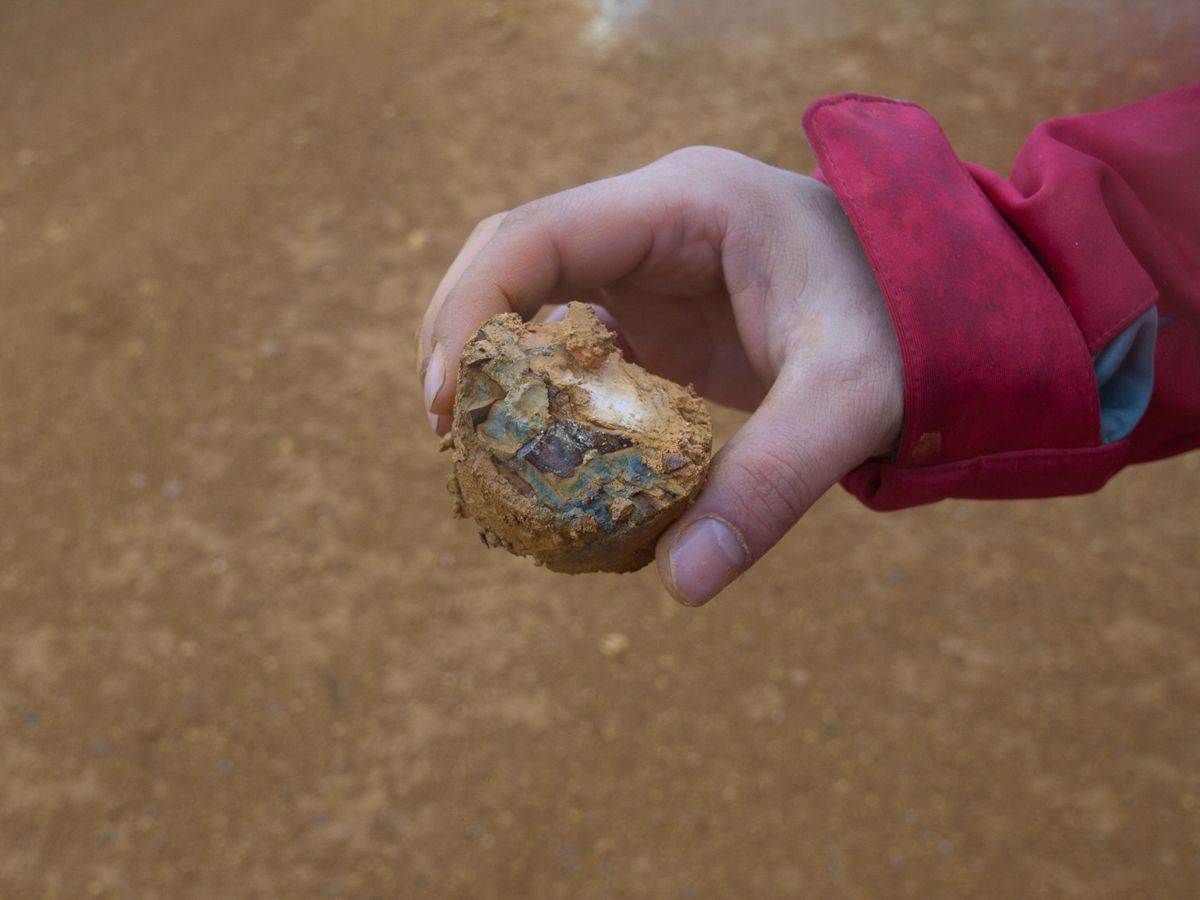2011

There we are, 4 days in simulation, an ‘Olympus Mons’ of data, and our thirst for knowledge has not been satisfied yet.
Our field crew in Spain is working hard on many different experiments, supply us constantly with data, defy wind and weather so we get enough information.
Among the experiments are the GPR (Ground Penetrating Radar) measurements and the associated drills. Using the data provided by the GPR, our science team is trying to analyze the composition of the soil. The drills then give us even better information and we can determine how accurate our analysis has been (which is not so easy due to the complexity of the application).

taking samples (c) ÖWF (Paul Santek)
By the EVA (Extra Vehicular Activity) we test, how accurate we can give directions to our suit tester. We mainly give a position to our tester and try to direct him to a specific target, a ‘very interesting’ stone for example. This may sound easy, but in fact it is not. It costs us a lot of brain power to figure out how to tell the suit tester, which of the 500 stones lying in front of him we are talking about.

Which one? (c) ÖWF Paul Santek
There the rovers come into action. The cameras mounted on the vehicles, as well as the helmet camera of our suit, help us in a way, that we at the MCC (Mission Control Center) do not have to give instructions completely blind. In Rio Tinto, we especially audit the mobility of the rovers, the data transfer of the cameras and the fine motor skills of our suit tester (for example when mounting ‘lost’ screws).
Likewise, one of our experiments is the CVE (Contamination Vector Experiment). With this experiment we want to find out, if and how much the wearer of the suit influences the environment he is working in. For example: We are asking if we find traces of life on Mars. If so, have they been there before, or are we analyzing ‘samples’ of our own astronaut? If it emerges that we find too many traces of our suit tester, we have to find the sources of the contamination and eliminate these.
The YETI (Youth Explores Terra Incognita) experiment is quite similar. A group of students from Lilienfeld grammar school want to discover “… if sterile Petri dishes without contamination can directly be spiked with bacteria from different surfaces like rock or sediment and whether this is possible for an astronaut with bold chunky gloves…” quote Anna Billensteiner (6R)
The participation of students is highly welcome at the Austrian Space Forum. The project Sparkling Science aims at giving students the opportunity to become active in research with their own projects. So did some students from HTL Kapfenberg by working hard on the Rover Phileas, as they build the wheel suspension from scratch. The greatest challenge for us was the documentation, which has to be very detailed, since we often have to act fast and professional. For example we should be able to determine if it makes sense to further investigate some specific spot. For this reason, data transfer has to be established (which, thanks to our IT department, working all the time, worked very well).
If something is not going the way it should, flexibility is needed. Some experiments may have to be delayed for instance (due to sudden rainfall etc) and we have to change plans and prepare another experiment. But this, thanks to a well-rehearsed team, can be done very quickly and without problems.

(c) ÖWF (Paul Santek
Here we want once again to express our thankfulness to all people who have participated in making this mission a great, unique success!
Dieser Artikel ist auch verfügbar auf: German
Events
Blog categories
- AMADEE-15 Simulation (13)
- AMADEE-18 (19)
- AMADEE-20 (21)
- AMADEE-24 (22)
- Aouda Spacesuit Simulator (67)
- ASE 2016 (9)
- Book tips (2)
- Events (32)
- Expeditions/Simulations (82)
- Flight projects (13)
- Guest blogs (14)
- Internships at the OeWF (57)
- OeWF internal (0)
- OeWF News (377)
- Phileas rover (21)
- Press Releases (41)
- Research/Projects (130)
- Serenity spacesuit (3)
- WBA 2025 (2)
- World Space Week (25)
